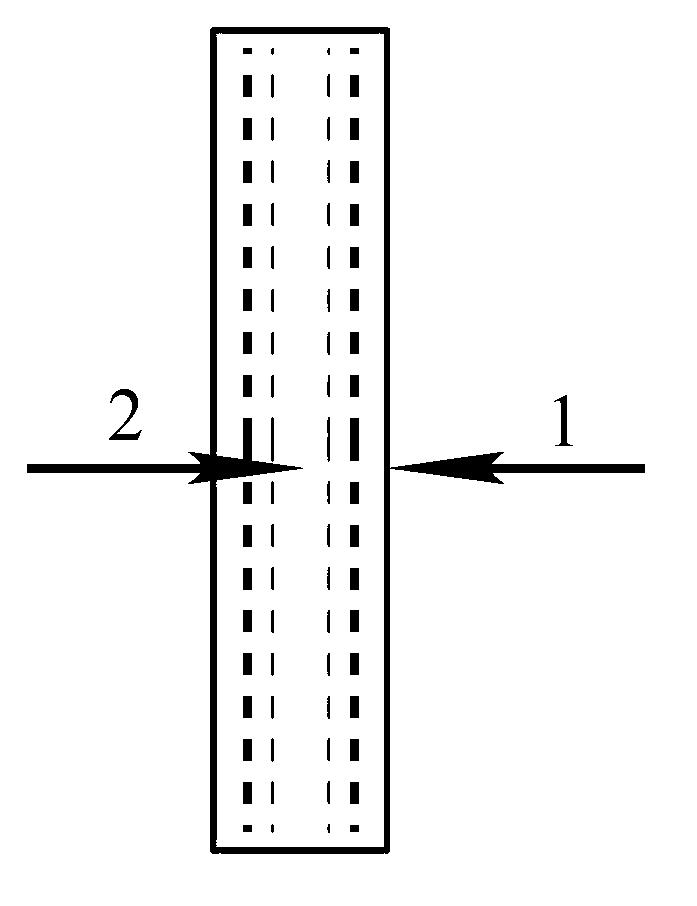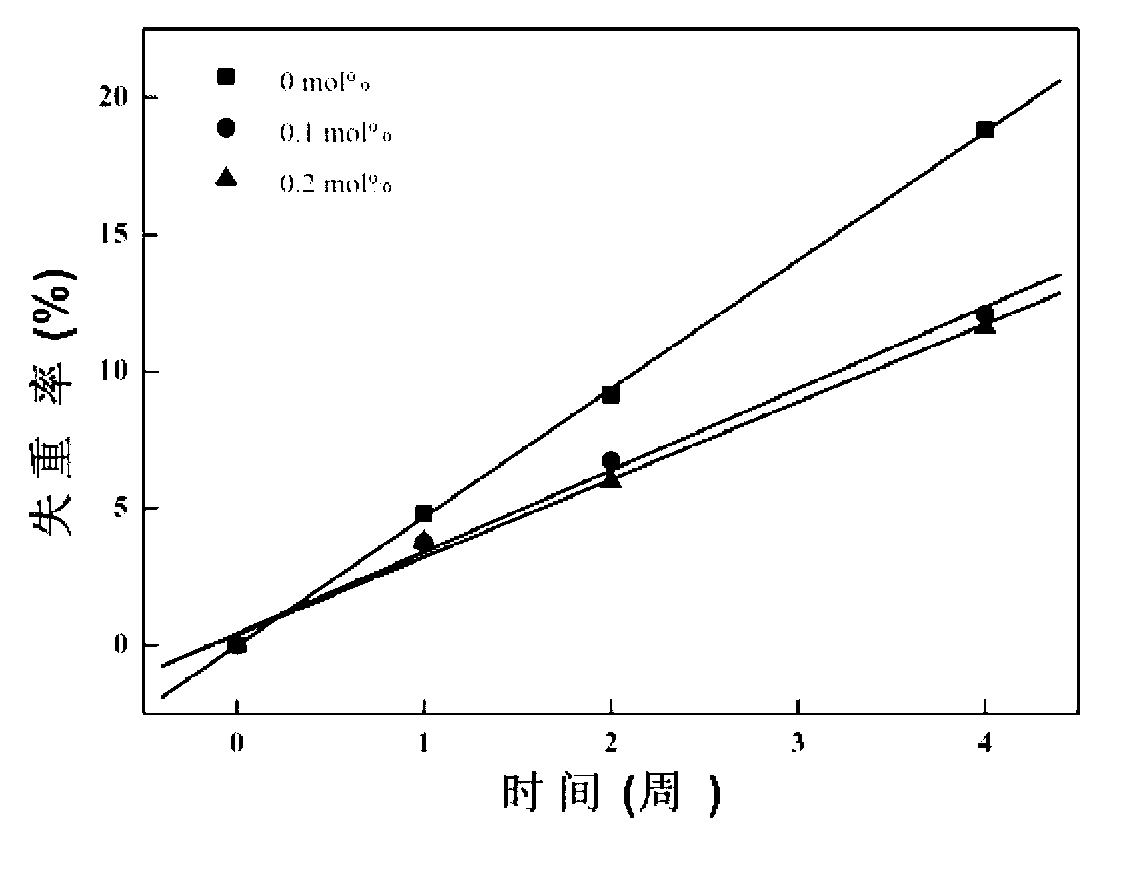Biodegradable medical polymer tubing and preparation method thereof
A technology of biodegradable and polymer materials, which is applied in the field of biodegradable medical polymer tubing and its preparation, can solve the problems of processing high-precision tubing from refractory biodegradable polymers, and achieve cost-saving, simple operation, and cost-saving energy effect
- Summary
- Abstract
- Description
- Claims
- Application Information
AI Technical Summary
Problems solved by technology
Method used
Image
Examples
Embodiment 1
[0040] Assemble a PTFE core with an outer diameter of 2 mm and a PTFE shell with an inner diameter of 3 mm concentrically and coaxially, place it in the reactor, add 0.1 mol of trimethylene carbonate at the same time, and vacuumize for 3 Stannous octoate was added as a catalyst after the first time, and the molar ratio of trimethylene carbonate and catalyst was 1000:1, and the vacuum was evacuated for 3 times (vacuum degree <15Pa), the tube was sealed under vacuum conditions, and the bulk polymerization reaction was carried out at 130 ° C for 24h After taking out, cooling and demoulding can obtain a polytrimethylene carbonate pipe with an inner diameter of 2 mm and a wall thickness of 0.5 mm.
Embodiment 2
[0042] After the stainless steel mold core with an outer diameter of 3mm and a stainless steel shell with an inner diameter of 5mm were treated with fluorine release agent, they were assembled together concentrically and placed in the reactor, and 0.1mol of caprolactone was added at the same time. After vacuuming for 3 times, add stannous octoate as a catalyst, the molar ratio of caprolactone to catalyst is 3000:1, vacuumize for 3 times (vacuum degree <15Pa), and seal the tube under vacuum conditions. After 48 hours of bulk polymerization at 150°C, take it out, cool and demould to obtain a polycaprolactone pipe with an inner diameter of 3 mm and a wall thickness of 1 mm.
Embodiment 3
[0044] After silanization of a glass mold core with an outer diameter of 5 mm and a glass shell with an inner diameter of 10 mm, they were assembled together concentrically and placed in the reactor, and 0.3 mol of trimethylene carbonate and 0.7 mol of caprolactone were added at the same time. And 0.001mol of crosslinking agent 5,5'-(propane-diyl)dioxepane-2-one, add stannous octoate as catalyst after vacuuming for 3 times, adding amount is 0.0002mol, decompression Vacuum 3 times (vacuum degree <15Pa), and seal the tube under vacuum conditions. After 36 hours of bulk polymerization at 110°C, take it out, cool and demould to obtain a trimethylene carbonate and caprolactone cross-linked copolymer pipe with an inner diameter of 5 mm, a wall thickness of 2.5 mm and a cross-link density of 0.2%. According to the preparation method of Example 3, adjusting the copolymerization ratio of TMC and CL and the usage amount of the cross-linking agent BTB, the trimethylene carbonate and capr...
PUM
| Property | Measurement | Unit |
|---|---|---|
| The inside diameter of | aaaaa | aaaaa |
| Thickness | aaaaa | aaaaa |
| Particle size | aaaaa | aaaaa |
Abstract
Description
Claims
Application Information
 Login to View More
Login to View More - R&D
- Intellectual Property
- Life Sciences
- Materials
- Tech Scout
- Unparalleled Data Quality
- Higher Quality Content
- 60% Fewer Hallucinations
Browse by: Latest US Patents, China's latest patents, Technical Efficacy Thesaurus, Application Domain, Technology Topic, Popular Technical Reports.
© 2025 PatSnap. All rights reserved.Legal|Privacy policy|Modern Slavery Act Transparency Statement|Sitemap|About US| Contact US: help@patsnap.com



